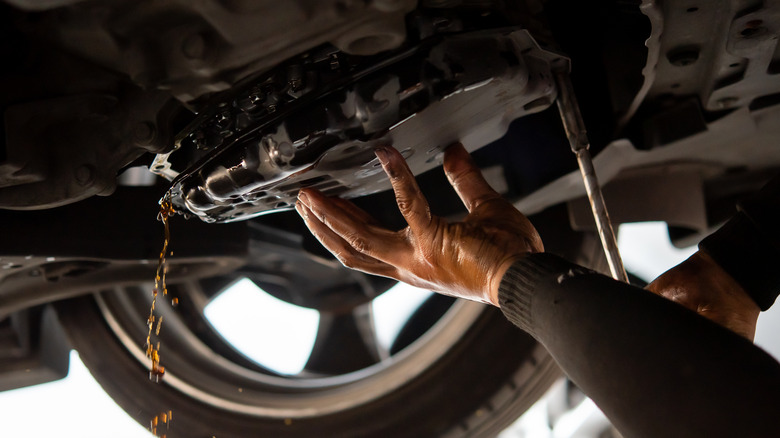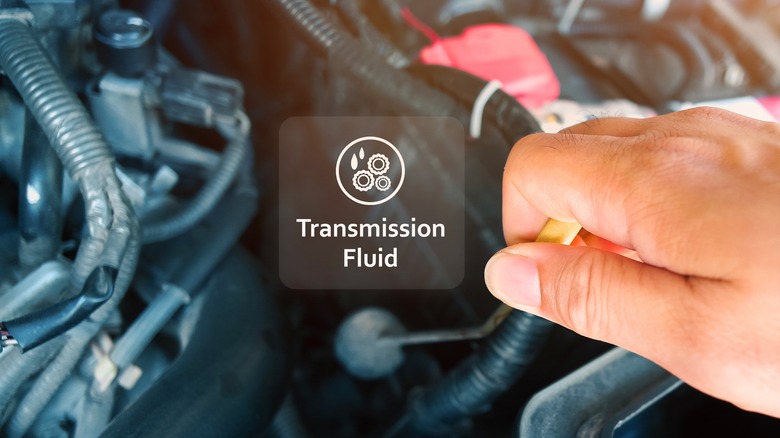Should You Leave Your Car Running When Adding Transmission Fluid?

You’re in the driveway, hood popped, transmission fluid ready to pour, do you add it with the engine running, or kill the motor first and hope for the best? It’s a common question, and getting it wrong can mean overfilling, underfilling, or a slippery mess. So here’s the short answer. For automatic transmission vehicles, you should leave the engine running when checking or adding transmission fluid, switch it off for manual transmission ones, but there’s more to it than that.
The more common automatic transmission, works under hydraulic pressure, and that pressure only builds when the engine is on and the oil pump is running. If you check or fill the fluid with the engine off, the reading on the dipstick won’t be accurate since there won’t be any hydraulic pressure for the oil. You could think you’re low and overfill it. The right move is to park on level ground, start the engine, shift through all the gears to circulate the fluid, then put it in Park (P) and check the level. Only then should you add fluid slowly, in small amounts, rechecking between pours. Even sealed transmission units need a fluid change, although at longer intervals.
Don’t wing it: check the manual and follow the procedure

Not every car plays by the same rules. Some transmissions don’t even have dipsticks anymore, especially on newer vehicles. In those cases, checking and adding fluid usually requires a professional or for you to locate the fill, and inspection plug, and definitely more than a funnel and guesswork. Even if your car does have a dipstick, some manufacturers want you to check fluid hot, others cold. Some say idle in (P), others say Neutral (N). It’s annoying, but it matters.
That’s why your owner’s manual or service manual should always be your first stop before you even pop the hood. It’ll spell out whether the transmission needs to be warm, running, level, or all of the above. Adding fluid the wrong way can cause issues and overfilling the system can aerate the fluid causing foaming, reducing its ability to lubricate, and lead to excessive pressure. Getting lazy here can lead to hard shifts, whining transmission, and reduced fuel efficiency. And have some heart, even good cars with bad transmissions deserve a loving fluid change, it won’t make a crappy gearbox any better but at least it’ll keep things rolling.
What to watch out for while you’re under the hood

Florin Patrunjel/Getty Images
Transmission fluid isn’t like engine oil, it doesn’t burn off under normal conditions. They can last a long time and most transmission fluids are recommended to be changed between 60,000 and 120,000 miles. If you’re consistently low, you probably have a leak. Look for brown or red spots under the car near the transmission pan. If it’s dark, smells burnt, and is accompanied by a noisy neutral, slipping or hard shifts, you’ve got bigger problems than just topping off. Transmission fluid is usually a bright red that deepens a bit with use, overtime. Dark brown or black indicates contamination and a light pink, on the other hand, means coolant contamination. And yes, some transmissions have coolers and that’s where the coolant can come from.
When adding fluid, use the exact type specified by the manufacturer, so consult the user manual to double-check. Transmission fluids are not interchangeable, and manual transmission fluids are thicker than automatic transmission fluids, as they serve different purposes. Using the wrong one can lead to grinding noises from the transmission, difficulty in shifting and slipping gears, basically messing with shifting performance. And as mentioned before, never overfill. Engine running or not, get it right because when it comes to transmissions, close enough is typically not good enough.
Should Your Car Be Running When You Add Transmission Fluid?

Checking and changing a vehicle’s transmission fluid is the best way to maintain the functionality of its gear-shifting mechanism. After all, said fluid is primarily responsible for lubricating the metal gears in your vehicle’s transmission, thus reducing friction and helping ensure every component stays cool and runs smoothly. Just like engine oil, never changing transmission fluid is a recipe for the failure of a vital component that is hardly cheap to repair or replace.
As with the other noted engine fluids, it’s recommended that you check a vehicle’s transmission fluid at regular intervals. While such intervals can vary depending on the make and model of your car, the general rule of thumb is that transmission fluid should be checked as often as once a month. It is generally recommended that you check a vehicle’s transmission fluid when it’s warm, meaning your car, truck, or SUV should indeed be running when you do so. Thus, it’s a good idea to drive around for a few minutes before you park to ensure the engine and transmission are at a desired temperature.
There’s a good reason you need to check transmission fluid when it’s warm. This way, you’ll get a more accurate reading on a dipstick once the fluid has been circulated through all the nooks, crannies, and lines associated with your car’s gear-shifting component. Likewise, you should also check the transmission fluid when parked on a flat surface to ensure the levels depicted on the dipstick are on point.
How to check your vehicle’s transmission fluid

You will, naturally, need to check and double-check that the vehicle’s gear shifter is fixed in the Park (P) position, and that the emergency brake is engaged before you check your transmission fluid with the engine running. Checking the fluid can also be a dirty job, so you may want to have gloves and a shop towel handy before you begin. With your engine warm and your vehicle immobile, follow these steps to check your transmission fluid.
- Open your vehicle’s hood and ensure it is in a locked, upright position.
- Locate the dipstick for the transmission fluid. The location may vary depending on your car, but the handle is typically red or yellow in color. Consult your vehicle’s Owner’s Manual if you aren’t sure where the transmission fluid dipstick is located.
- Remove the dipstick from its chamber and wipe it clean with a cloth.
- Reinsert the dipstick and remove again, checking the level of fluid against the recommended level indicated on the dipstick.
- If the fluid is low, you will need to add some as soon as possible.
If you’re uncertain what transmission fluid is best-suited to your vehicle, the information can likely be found in the owner’s manual. While inspecting the dipstick, you should also check the color and viscosity of the transmission fluid. New transmission fluid is typically pink or clear in color and turns brown over time. If the fluid in your vehicle is brown or smells burnt, it’s probably time for a change. Ditto if it contains visible dirt particles, which you can also feel for by wiping fluid off of the dipstick with a gloved finger and rubbing it over your thumb.
https://jalopnik.com/1899833/leave-car-running-while-adding-transmission-fluid/
https://www.slashgear.com/1587376/should-car-be-running-when-adding-transmission-fluid/
